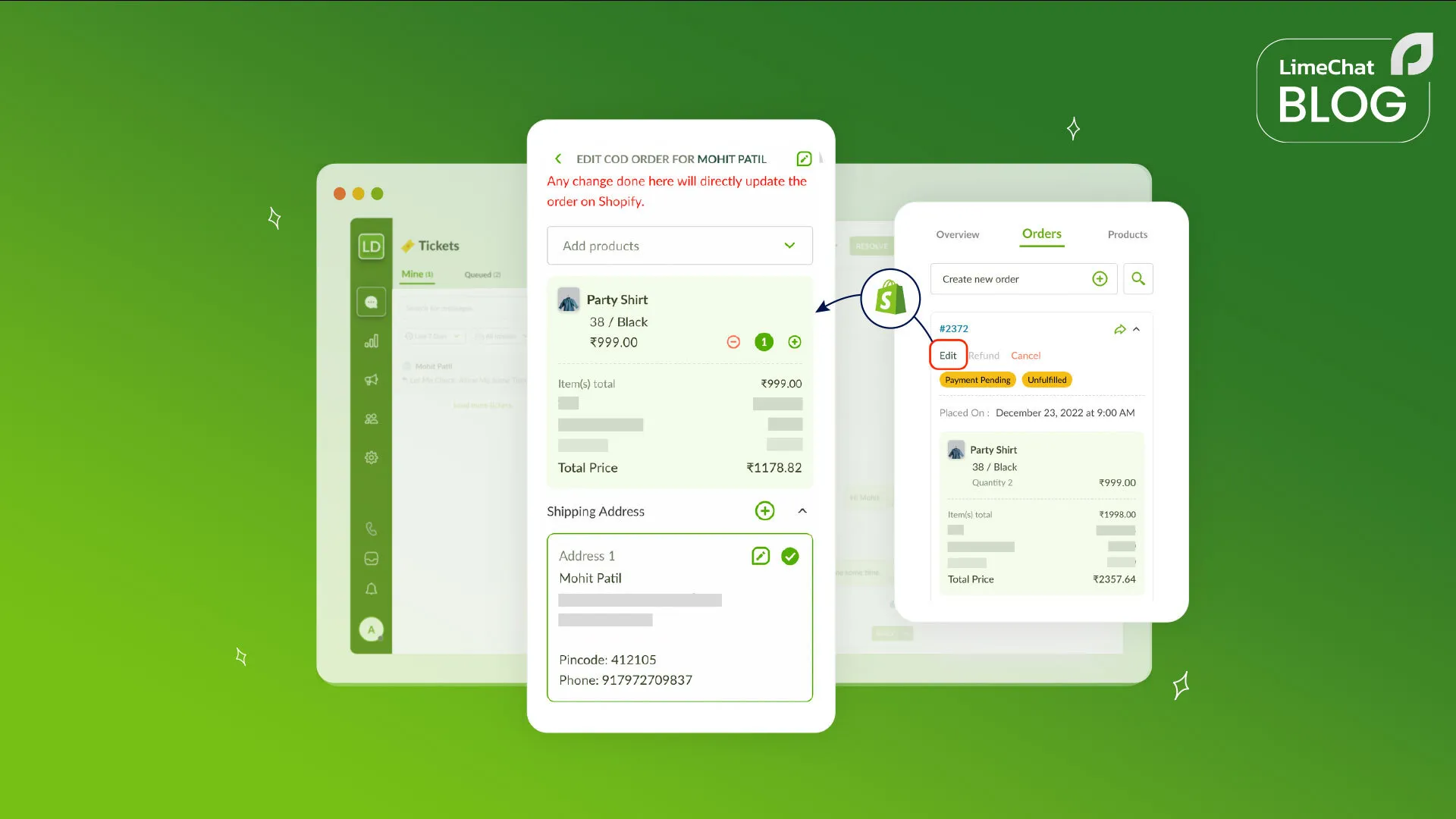6 Tips to Make your eCommerce Store More Accessible

Ecommerce has been growing rapidly over the past few years, especially as a result of the pandemic, which has led to many businesses operating online.
With online shopping becoming prevalent across the globe, it is imperative that ecommerce businesses employ thoughtful design- that caters to all sections of their customers.
Did you know that by neglecting accessibility, you could be preventing a significant portion of customers, who may have hearing, speaking, or other disabilities, from not being able to shop from your store?
In fact, in Nik Sharma’s recent newsletter, he mentioned that your business could be sued for not making your website accessible. He also talked about some tools that ensure your website passes all checks.
However, they can be expensive and time-consuming to onboard, especially when you’re trying to rapidly save on costs and scale.
In this post, we’re going to zero in on the 6 key things you can do to learn how to provide an inclusive shopping experience for all your website visitors that you can quickly get your team to implement or look for these customisations while designing your Shopify store.
First, let’s dive into the basics of what accessibility actually means.
What is accessibility?
Designing your products with accessibility ingrained in the design can ensure that everyone can interact with your services regardless of their abilities.
Simply put, it’s the right thing to do.
While running an online business, it is essential to remember that not everyone’s shopping experiences are the same. According to WHO, around 15% of the world’s population is disabled.
Websites that don’t follow accessibility practices make it difficult for users to have a good customer experience.
But what exactly do you need to keep in mind while designing your website or ecommerce store?
It boils down to four key things.
Four Principles of Accessibility
To ensure that your ecommerce store is made accessible, the World Wide Web Consortium (W3C) has issued a set of requirements and guidelines that you MUST follow.
They are organised based on four principles:
- Perceivable – No matter who the user is, they must be able to perceive web material, so you need to include audio for blind people and text (in the form of closed or open captions) for deaf people that screen readers and other assistive technology can read.
- Operable – Websites should be simple to use for individuals with disabilities. For example, you must include keyboard-based functionalities because several people with disabilities cannot use a mouse. A website’s media and animations should be accessible to users and customisable. For those with cognitive problems, websites should provide them ample time to read and comprehend the content and provide exact page names, well-structured content, and an intuitive website layout.
- Understandable – Users should be able to comprehend every aspect of an ecommerce store- alone or using assistive devices like screen readers. It is essential to use plain language that is easy to read, comprehendible and performs consistently. Form labels should be evident, and store navigation should be continuous and consistent.
- Robust – A website should function adequately on many browsers, platforms, and devices and not impose its web accessibility features on its visitors. Websites must be cross-platform compatible and have responsive designs to avoid issues when users switch browsers or devices.
Benefits of Building an Accessible Ecommerce Store
There are many benefits of building an accessible website-
- It helps ensure that your store is inclusive and can be used by anyone, regardless of their abilities.
- Building a store with accessibility means a better user experience for everyone and helps with customer loyalty and retention.
- It improves SEO metrics by increasing your site score and driving more traffic.
- Make up for lost revenue from a section of people who cannot access the site’s content or have difficulty using it.
- Prevent any legal complications due to non-compliance.
6 Tips to Tackle Accessibility Issues on your eCommerce Store
While building a website, it is important to consider how different people would be affected. Here are some tips to keep in mind while designing your online stores to tackle accessibility issues.
Using Colours Correctly
Around 300 million people worldwide are affected by some form of colour blindness. This rarely means that those afflicted see everything in black-and-white. It just means they have trouble telling colours apart from each other.
To help with this issue, avoid low-contrast design by choosing colours on the opposite side of the colour wheel.
The WCAG even has guidelines to follow for achieving effective contrast. The standard text should at least meet 4.5:1, while large text should have a contrast of 3:1.
Many online tools help you with this, so you don’t have to worry about how these numbers are calculated.
It is also important to ensure you don’t rely exclusively on colour to give out information. For example, avoid indicating required fields only using colour or giving colour-specific instructions. Instead, use an accompanying text reference to show what you want the user to do.

Another thing to remember while selling is to provide exact product colour names. Avoid any ambiguous words and describe them using basic colour names like “light green” or “dark red.”

Make the Website Keyboard Accessible
People with specific vision impairments or issues with dexterity might find it challenging to navigate the website using the mouse or click on elements that are too close to each other.
That is why, as per WCAG, the entire website should be fully accessible by keyboard. For example, using the tab key should allow users to switch from one interactive element to another.

Always Use Alt Tags
Images are often a high-impact way to convey information to your store visitors. However, for blind users, this becomes a barrier.
They rely on alt tags to comprehend images. Alt tags provide text alternatives to elements that cannot be rendered otherwise. Using these tags can also help improve SEO!
Here is an example of what the code looks like-
<img src=“pancakes.png” alt=“Stack of blueberry pancakes with powdered sugar”>
People with visual impairments often rely on technologies like screen readers or assistive technologies that cannot read images or text. Providing an alt tag for all images uploaded to the website is important.
These tags should be clear and concise, conveying all of the necessary information available in the picture.
Alt tags are also helpful for people with slow internet regions, making it difficult for images to load.

Clear Content Structure & Headings
Screen readers and other assistive technologies use headings to quickly navigate from one part of the page to another to make a purchase or get only the required information quickly.
Therefore, it is important to optimise the structure and headings to accurately describe the page’s content.
Here are some tips:
- Use your headings in sequential order
- Make sure all the content is descriptive and concise
- Use sitemaps to provide an overview of the site and for easy navigation
- Indicate current location using navigation bars
- Give users the option to change font sizes on mobile devices
Better content structure is another way to help with SEO and drive traffic to increase conversions. It also helps improve the overall user experience.

Designing for People with Hearing Loss
Over 5% of the world’s population is deaf or suffers from hearing loss. Though browsing an eCommerce website is primarily a visual experience, they encounter many difficulties.
Some tips to effectively design for people who are deaf:
- Include open/closed captioning in all video-related content. While adding open captioning, ensure the font colour, size, and opacity are clear and readable.
- Provide a transcript for users to print and read at their own pace.
Be Conscious of Accessibility from the Designing Stage
While designing your store, putting yourself in the customers’ shoes is necessary to understand their limitations and needs.
Encouraging diversity in the workplace can help bring a fresh and inclusive perspective to your products.
Many automated tools check different browsers’ contrast, keyboard accessibility, and screen reader compatibility and determine which element on your website lacks accessibility.
You can even try to appoint an in-house consultant to ensure everything is up to standard, provide training and conduct regular audits.
Conclusion
Accessibility is an extremely vast topic, but these are just a few things to remember while trying to provide an inclusive shopping experience.
With eCommerce booming and the number of online stores rapidly rising, so is the demand for accessible websites.
Being a responsible brand owner ensures that anyone can use your store and easily shop online.
Transform your marketing and support today






